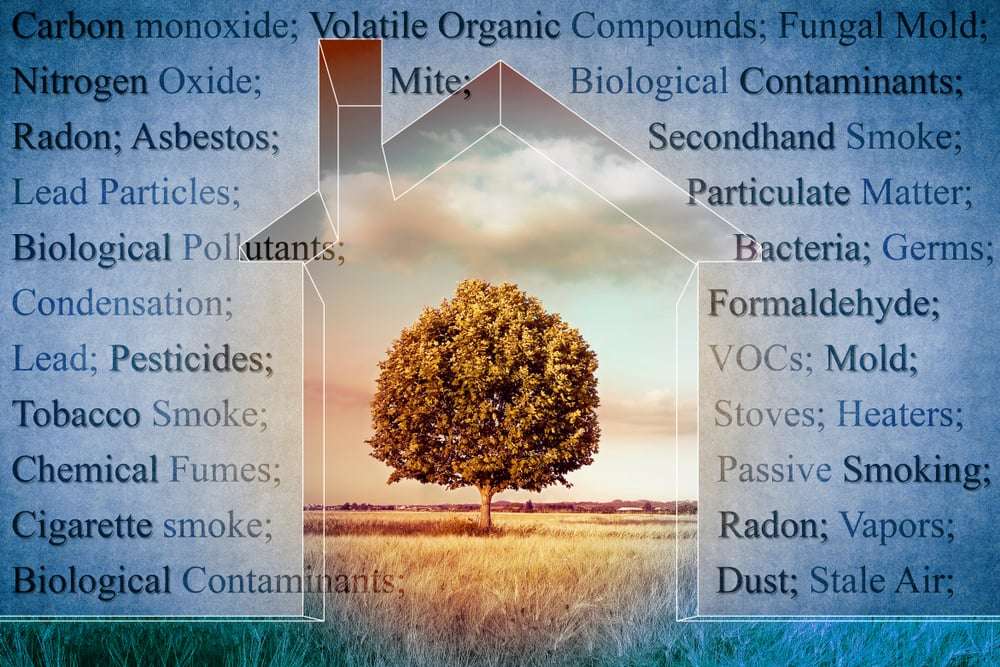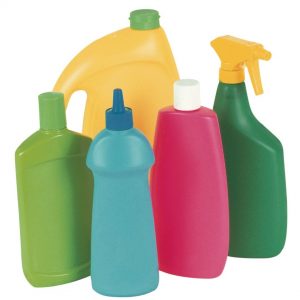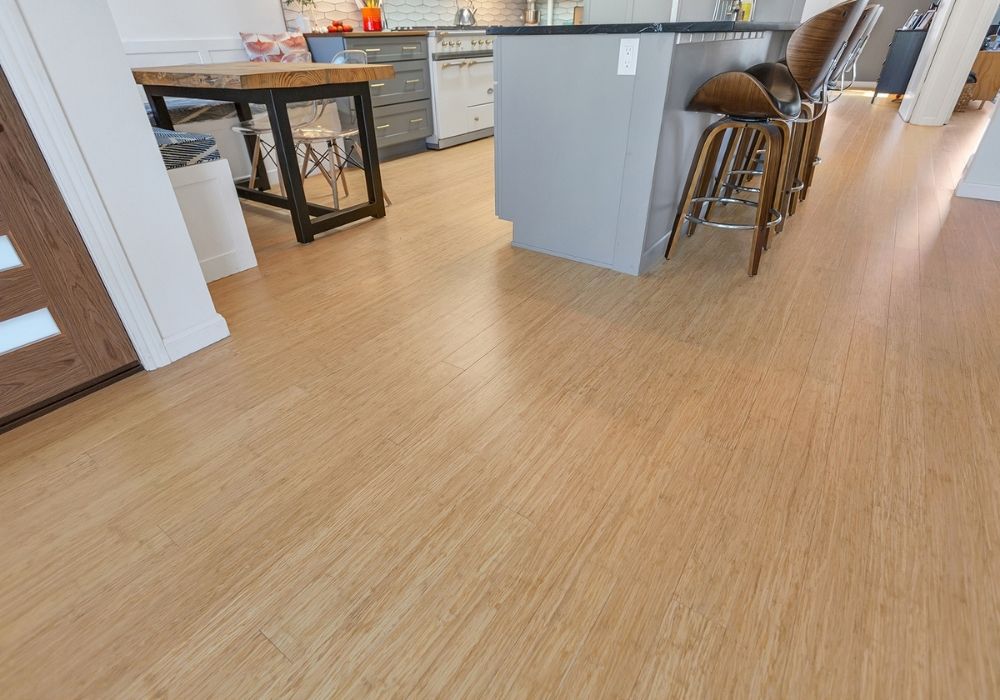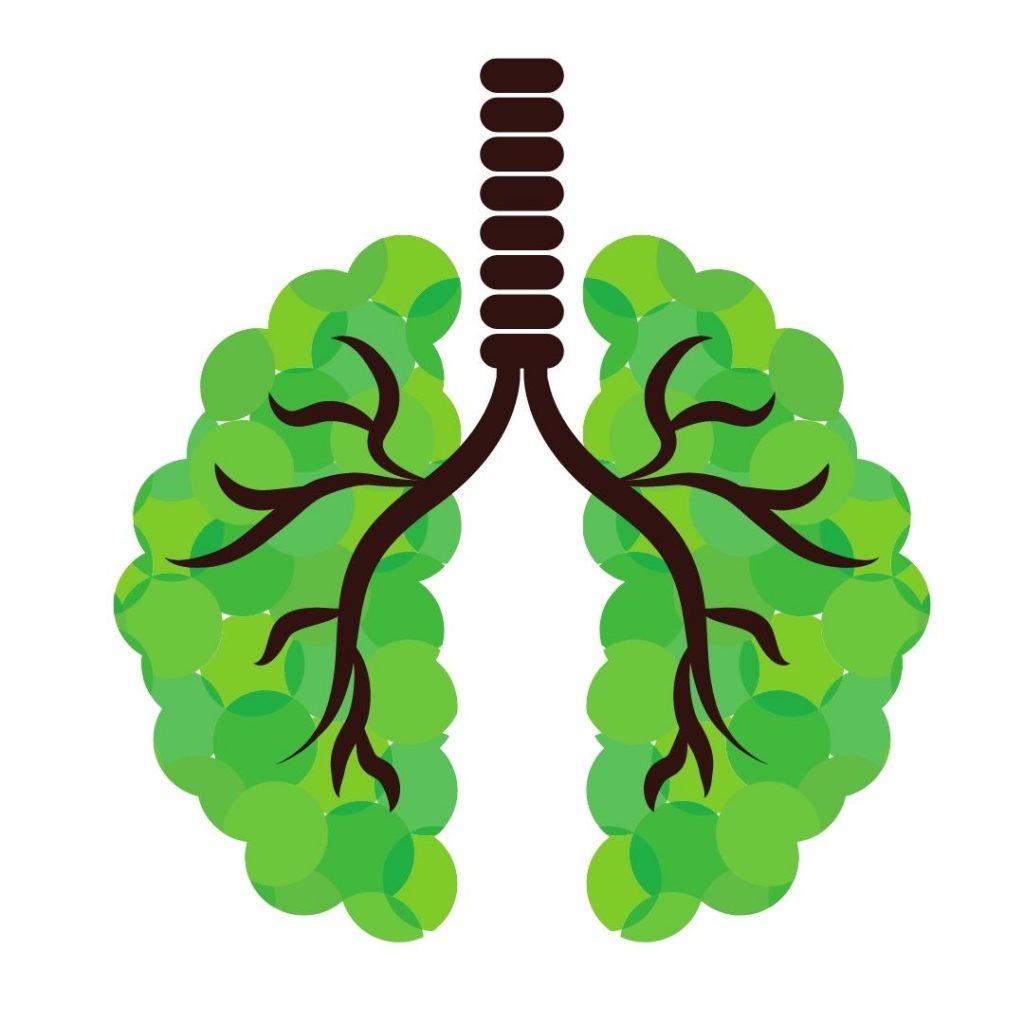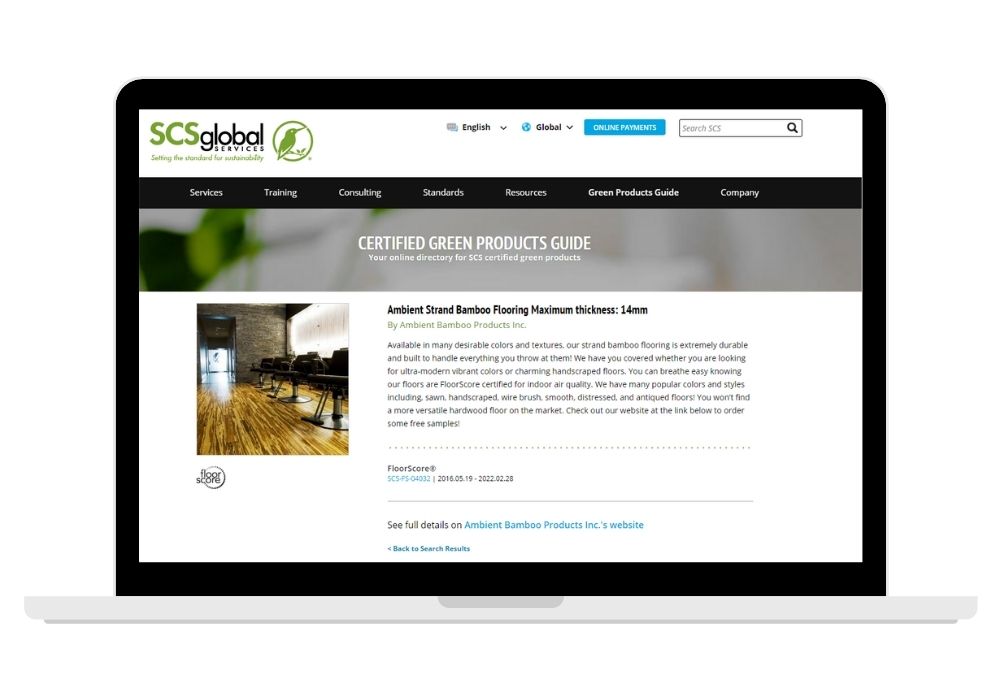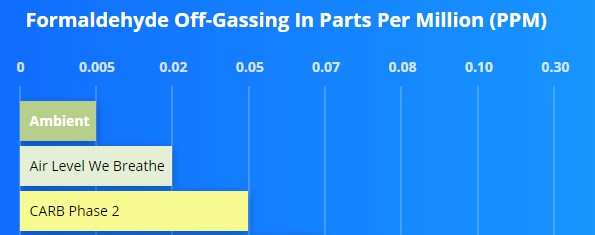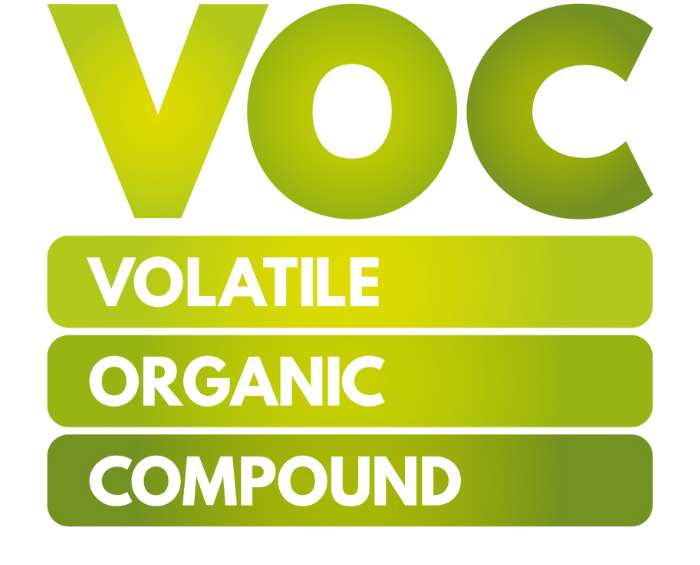
Understanding the hazards that volatile organic compounds (VOCs) can present and how to avoid them is a crucial step in making your home—and the environment—a healthier place.
Whether you are building your dream green home from the ground up or are looking for ways to make your current home more eco-friendly, decreasing volatile compounds is an important place to start.
What are the Volatile Compounds?
VOCs refer to a variety of compounds, many of which can have both long- and short-term effects on a person’s health. Some of these chemicals are also known carcinogens, giving you an even more urgent reason to avoid them. Thousands of commonly used household cleaning products, construction materials, and finishes such as paint and lacquer contain these potentially dangerous chemicals. When materials “off-gas” or release their chemicals into the air in the form of gas, people and other living organisms may be exposed to high pollutant levels.
What exactly are you breathing when items off-gas? The list of hazardous chemicals includes:

- Acetaldehyde, present in polyester resins, dyes, laminates, foam, and linoleum
- Phenol, found in vinyl flooring and some wall coverings
- Formaldehyde, found in pressed wood, resins, paneling, flooring, and furniture
- Glycol ethers, used in cleaning products, coatings, and solvents
- BTEX (benzene, toluene, ethylbenzene, and xylene) found in many petroleum-based products
- Methylene chloride, a common ingredient in adhesives
Toxic chemical levels pose a bigger hazard indoors, where they can be up to ten times higher than the concentrations found outdoors. This makes sense, considering that most modern homes are well-insulated, and households keep their doors and windows closed to control the temperature inside.
It is somewhat surprising to learn that the outside environment has very little influence over indoor air quality. A study by the EPA found no average difference in levels between homes located in rural areas and those in highly industrial areas. In both cases, levels measured two to five times higher indoors than outdoors.
Where Are VOCs Found?
Most of the concerning chemical compounds are naturally occurring. They even exist in our cells. There’s no way to avoid them altogether, but we can avoid high concentrations of them.
If you have ever had new carpeting installed, ever removed the plastic from a newly delivered mattress, or if you have refinished a piece of furniture, you have experienced the harsh chemical smells associated with concentrated off-gassing. And if you’re fortunate enough to be building or remodeling a home, there’s no doubt you’ve been in contact with at least some toxic off-gassing.
Common Sources of Toxic Off-Gassing
- Household cleansers
- Paint and other solvents
- Hobby supplies such as glue and marking pens
- Composite and treated wood
- Construction adhesives
- Floor coverings and pads
- Hardwood veneer
- Particle and fiberboard
- Insulation
- Office equipment (copiers, computers, etc.)
Just about everyone has been exposed to off-gassing at some point or another – but don’t worry. Minimal exposure to the aforementioned off-gassers isn’t going to compromise your health. It is impossible to eliminate volatile compounds completely, but we can decrease the level and length of exposure. Opting for safe flooring and other non-toxic building materials is a simple way to minimize your risk.
Potential Health Effects
Some of the chemicals present in off-gassing are highly toxic, while others have no known effects on health. Other factors that affect toxicity include the extent of exposure and the temperature. High temperatures speed the rate of off-gassing, putting more chemicals into the air in a shorter period. Use extra care if you must be exposed to volatile compounds when temperatures are high.
Common symptoms related to exposure include:
- Headache
- Nausea, vomiting
- Irritation to eyes, nose, or throat
- Fatigue
- Dizziness,
- Rash or other skin reactions
- Nosebleeds
- Shortness of breath
Long-term exposure to some volatile organic compounds can lead to serious health hazards, including damage to the kidney, liver, central nervous system. It can also cause cancer.
Safe vs. Unsafe Exposure Limits
In industrial settings, less than 0.3 micrograms per cubic meter of air is considered to be a low level of chemical compounds, and one to three micrograms per cubic meter is considered high. While you can purchase equipment to measure the VOC level in your home, no state or federal standards have been set for non-industrial settings. This is in part because the toxicity level of individual compounds varies. Some compounds are more dangerous than others, and some people are more vulnerable than others.
It is possible that a low amount of exposure could affect your health if you have certain pre-existing conditions. Young children and the elderly are most vulnerable. People with asthma, respiratory disease, limited kidney/liver function, or known sensitivities to certain chemicals are also at a higher risk. To be safe, keep at-risk individuals away from rooms or buildings where off-gassing is concentrated or a harsh chemical smell is present.
Seek the advice of a medical expert if you’re concerned that you or a family member are ill due to a high level of toxic compound exposure.
Reducing Exposure in Your Home
The first step in reducing your exposure to dangerous compounds is to avoid products that contain them. Choose natural cleaning products and non-toxic materials such as bamboo flooring for your home. Many flooring materials contain high levels of toxins, so opting for safe flooring can significantly reduce your exposure. You can’t always avoid toxic chemicals, but you can decrease your risk by reading product labels and seeking certified no- and low-emission materials providers.
Ventilation is the second most effective action you can take. If you must be near when building materials or other purchases are off-gassing, leave the item(s) outdoors for a day or two if possible. If that’s not practical, open the windows and use fans to create a breeze. The more fresh air you can let into the area, the lower the concentration of toxins will be.
If practical, use heat to speed the off-gassing process. Place items in direct sunlight or turn up the thermostat in the room where they are stored and leave for several hours. Open all windows and doors when you return, and avoid going indoors until the air smells fresh again.
More Tips for Reducing Your Exposure to Toxins
- Follow manufacturing directions for all cleansers, paints, solvents, and adhesives
- Never mix household cleaning products
- If you smell harsh chemicals, provide more ventilation or leave the area until off-gassing has subsided
- Do not store opened paints or other products indoors
- Buy potentially toxic products in small quantities that will be used quickly without the need for storage
Do your best to exceed the safety guidelines provided with your purchase. If the directions say to use in a well-ventilated area, open every possible window and door. And remember, the concentration of toxins is always higher indoors. Move your painting or refinishing project outdoors if possible, or let that new mattress air out on the back porch for a few days before bringing it inside.
Toxins and Your Flooring
Flooring is one of the worst sources of toxic off-gassing in the home. You may think you have chosen safe flooring for your family. However, according to the American Lung Association, children are the most vulnerable to toxic compounds emitted by flooring materials because they spend more time laying, crawling, and playing on the floor. The effects can be so serious that installing a new carpet has been related to respiratory problems among infants during the first year of life.
But carpet isn’t the only culprit. Certain types of laminate flooring have been found to contain high levels of formaldehyde, a known carcinogen. And the CDC reports that exposure to even the lowest levels of this toxic chemical could cause eye, nose, and throat irritation in healthy people. People with asthma and respiratory diseases like Chronic Obstructive Pulmonary Disease are at an even greater risk. Other health risks associated with formaldehyde include neurological problems and reproductive health.
While it’s true we can’t avoid all chemicals, we can avoid this major source of toxic compounds by selecting safe flooring with no- or low-emission levels from Ambient.
Finding Safe Flooring Options for Your Home
It is possible to enjoy the beauty and durability of wood floors without filling your home with toxins. Ambient is a proud supplier of bamboo and eucalyptus flooring that rates as “effectively zero” for formaldehyde emissions.
**Use caution with any supplier who claims their products are 100% “free” of formaldehyde or other known toxins. Formaldehyde naturally occurs in almost everything, including the cells that make up the human body.**
Wait, is that the same as formaldehyde-free? Use caution with any supplier who claims their products are 100% “free” of formaldehyde or other known toxins. Formaldehyde naturally occurs in almost everything, including the cells that make up the human body. Microscopic amounts of formaldehyde may exist in anything, including bamboo flooring. Ambient™ is one flooring manufacturer that has shown “effectively zero” off-gassing emissions during testing every year.
When you’re in the market for eco-friendly flooring, look for suppliers who have their products regularly tested and certified. Ambient has maintained a 16-year record of “effectively zero” off-gassing with both eucalyptus and bamboo flooring. That’s an unparalleled industry achievement!
More Tips for Finding Safer Flooring Options
- Avoid vinyl flooring that contains toxic additives
- Avoid fluorinated stain repellent when buying carpet
- Check for the type of recycled content (avoid products with post-consumer recycled vinyl, crumb rubber, and fly ash)
- Be on the lookout for hazardous materials such as antimicrobial additives
- Select materials that are certified as safe flooring
You’re passionate about making your home a greener, healthier indoor environment. It’s not always the easiest choice, and it’s certainly not always the least inexpensive. Eco-friendly products can be difficult to source and often cost more than similar materials you can easily find at your neighborhood big box store. Don’t let “green companies” who can’t provide certification or testing results for the products they sell fool you!
Before you make the final decisions on safe flooring products and other green building materials, ask what type of documentation the company can provide to prove their products have low chemical emissions. Read on to learn more about the value of FloorScore and CARB certification.
Understanding FloorScore Certification
FloorScore is the most recognized certification standard for measuring the chemical emissions from hard surface flooring materials, including the underlayments and adhesives used to secure them. Achieving FloorScore certification means:
- The products tested have met all requirements of California Section 01350
- All emission test reports undergo review by independent laboratories specifically knowledgeable for that product
- The company conducts regular inspection of all formulas, processing, manufacturing plants, and quality control standards to maintain the FloorScore seal
Selecting a product with the FloorScore certification ensures you are getting the greenest, cleanest choice possible. Designers, architects, and contractors who specialize in green construction trust FloorScore certified products to help them choose the safest flooring available and create a healthy indoor environment for their clients.
Thanks to our safe flooring options, Ambient has earned the respected FloorScore certification. Every customer can easily download our certifications—we are proud of the achievement and are happy to show them off!
Understanding CARB Phases I and II
California Air Resource Board (CARB) is under the umbrella of California’s Composite Wood Products Regulation. Phase I of CARB was instituted in 2009 to reduce the emission of formaldehyde from hardwood, plywood, and composite wood products. Phase II of CARB went into effect in 2010 to lower emission standards to .055 ppm. CARB is the strictest air quality measure on record, providing a definitive cap for emission levels instead of merely an average.
Ambient’s safe flooring products meet or exceed the standard set by CARB Phase 2.
The Finishing Touch
The flooring material is only part of the picture when it comes to safe flooring for your home. Ambient floors come prefinished with a UV-cured coating to reduce off-gassing. Not only does this method provide a durable, beautiful, and non-toxic finish for the homeowner, it makes the work environment safer for factory workers. Ambient’s commitment to eco-friendly building includes creating a healthy workplace for those working hard to manufacture our safe flooring products.
Contact Ambient today with your questions about off-gassing and environmentally-responsible flooring options. We can help you select materials that meet even the strictest indoor air quality standards without sacrificing any of the beauty or style your home deserves. Our sustainable bamboo flooring is competitively priced and easy to install!

About the Author
Meet Bridgett, your friendly neighborhood green building guru! With more years of experience than she’d like to admit, Bridgett is your go-to expert for all things eco-friendly construction. She’s on a mission to make your home the envy of every tree hugger in town (and maybe even the squirrels 🐿️). Let’s build a greener, funnier, and all-around better world together – one enlightened eco-conscious choice at a time!

